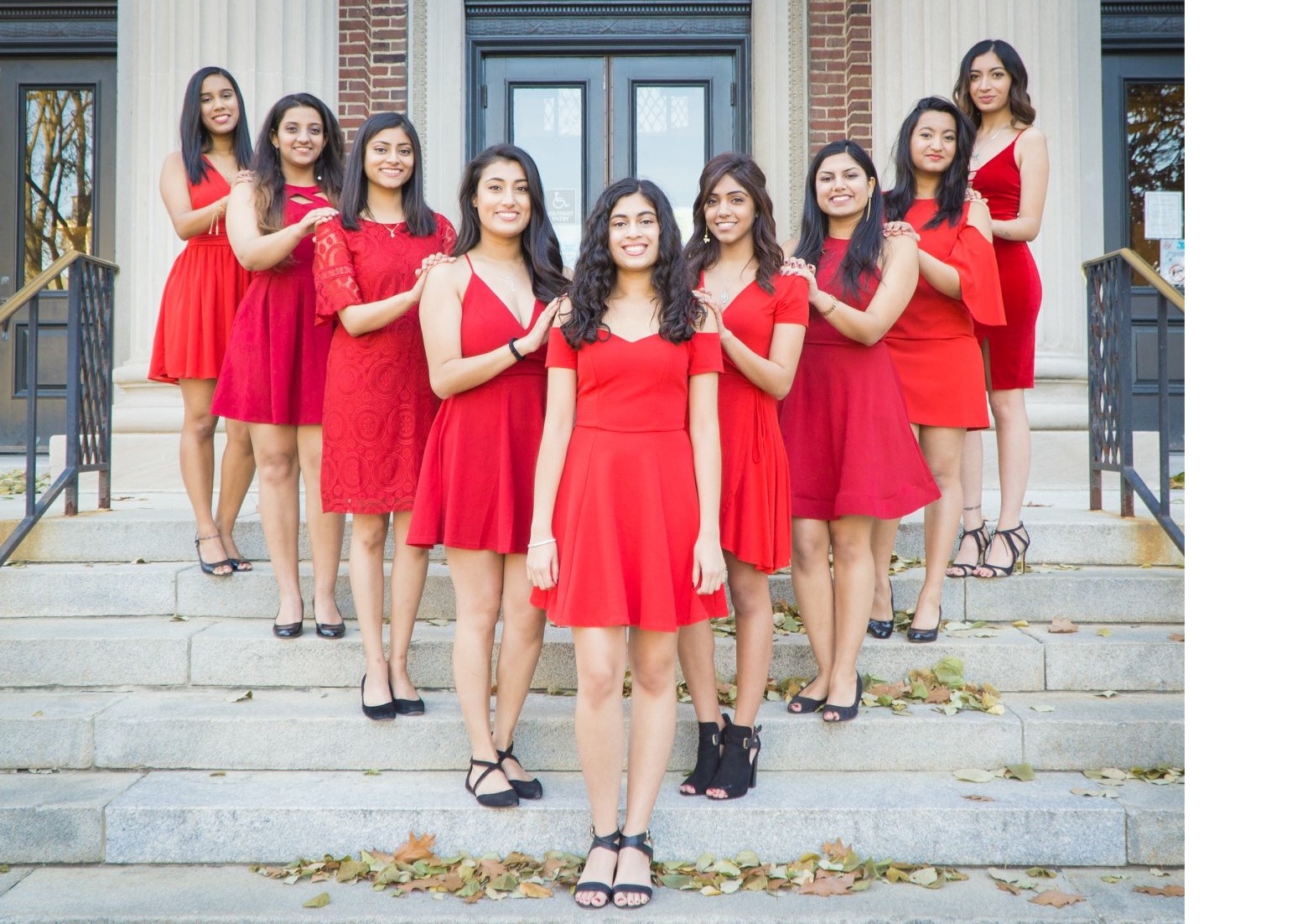
As a community, we strive to embrace all individuals of various ethnicities, genders, religions, and sexualities. We believe that everyone should be treated equally and with respect. This series of spotlights focuses on social justice pieces, so that everyone feels welcomed and supported.
Illini Ishaara, a classical team based out of the University of Illinois at Urbana-Champaign, was established in Spring 2017. The five founders, Shree Modi, Kinjal Thakkar, Rhea Mundle, Aamy Kuldip and Nidhi Singh, wanted to create a team that helped spread the style of Indian classical dance on the UIUC campus.
Interview:
What makes your team stand out from other classical teams in the circuit?
In comparison to other groups in the classical circuit, we are one of very few that are Kathak based. Many teams in the circuit are primarily Bharatanatyam. Thus, our perspective on classical dancing might vary in our technical and musical presentation of the dance. In our dance, we incorporate the traditional roots of Kathak while also bringing a more modern perspective. We are very interested in sharing different stories, regarding more cultural, religious, or social concepts. Kathak is storytelling artform that we aim to carry the tradition of. As a team, we strive to draw inspiration from our individual experiences and the world around us to tell stories that we feel can relate to a larger audience.
Social Justice Piece
How did the concept of your video arise? What made you want to address this social issue, in particular, through dance?
The choreographers for this piece were Nidhi Singh and Rhea Mundle. When thinking of a theme, we first started by deciding whether we wanted to do a traditional or contemporary theme. As this was our first time applying to the classical competitive circuit, we wanted to challenge ourselves by choreographing a Kathak piece on a more contemporary topic. Thus, we began discussing different themes that were relevant to current events such as separation of families and immigration, as well as, more broad ideas like the love of a mother or losing someone you love. When the topic of losing someone came up, we both were intrigued by the process of grieving and how that takes on a different form depending on the person and who they have lost. Grief can come from losing a family member, a friend, a partner, etc. and so we wanted to create a dance that symbolized the universal process of loss that people go through because everyone can relate to it to some degree. Further, we felt like the grace and mudras, or hand gestures, within Kathak would be able to exemplify the more vulnerable aspects of the piece while the footwork and circles, or spins, would be able to capture the more intense emotions required to bring the theme to life. After finalizing the theme and the creative vision of the piece, we named our piece, The Stages of Grief.
How did you go about tackling the choreography for the piece?
The choreography for the Stages of Grief was very dependent on the mood and meaning of the particular stage. We relied heavily on the feel of the music for each section to ensure that the transition from stage to stage made sense and created the full story. In each stage, we tried to think of how each emotion would translate into our steps, specifically our intensity, grace, and our facial expressions. In anger, for example, we understood that this music was very intense, strong, and conveyed a sense of fury. Thus, we tried to incorporate fast footwork formations, like that of a pyramid, that would help create a bold statement portraying anger. On the other hand, in depression, we focused on just three people and showed the rest of the dancers exiting. This was symbolic in that the depression stage is a lonely place that is more delicate and somber. We tried to approach each stage with its own definition of its identity and simply portray them through our formations, movements, grace, and facial expressions.
What made you pick the songs you did for each stage of grief?
Since the stages of grief has five stages that each represent different emotions (e.g. denial, anger, bargaining, depression, and acceptance), we knew from the beginning that we would have to put together our own mix of songs that clearly represented each emotion. Along with that, since stages of grief is a more contemporary topic, we felt like dialogue in between the songs would help guide the audience to understanding our piece better. Thus, we began by creating a list of music that we felt best captured the mood of each stage. For denial and depression, we tried to find instrumental pieces that had a sad meaning or feeling to them and were slower in tempo. Especially for depression, we really wanted a song that would evoke pain and hurt in a more quiet and somber way. Moreover, for anger and bargaining, we wanted to find pieces of music that were fast paced and had a lot of places where could choreograph footwork and circles since for both of those emotions, we wanted to exemplify the rage, restlessness and panic with sharp, intense motions. Specifically, for the third stage, we wanted to find music that had a sawal javab, also known as question-answer, in it since we felt like that type of music would best exemplify the essence of bargaining. Finally, for acceptance, we wanted to find a piece of music that was more upbeat and happy in sound yet still Kathak based. Thus, we thought Ravi Shankar’s tarana was perfect to showcase the slow process towards accepting loss and moving forward.
Were the all black outfits intentional to depict the darkness of grief?
We chose the all black outfits as a symbol for unity and power. Though the color of black can have connotations of sadness and darkness, it also is a color that to us represented strength. Grief can be overbearing and scary, as the color black would also suggest. However, we understand that at the end of the stages of grief, there is also a sense of strength and empowerment in one’s ability to move forward and carry on with this power. Thus, from the start to the end of the stages of grief, the black color of our outfits carries the story with feelings of sadness, loneliness, and finally a sense of vitality.
How did you work with the videographer to make your idea come to life?
For us, filming this piece was incredibly special since we were not able to perform it in front of a live audience. Thus, when it came to working with our videographer, we wanted to make sure that the video angles helped enhance our choreography and our formations. With that, for denial, we directed our videographer to be more zoomed in on the dancers in order to capture the vulnerability of this emotion and the subtleness of some of our facial expressions and movements. For the second stage, anger, we had choreographed the formation to be of a pyramid and wanted to add to the power of the piece by having the videographer film us head on so our entire group could make direct eye contact with the camera.
Moving on to the third stage, bargaining, we had the videographer film us from an angle. For that stage, we had two groups of dancers. The dancers on the right represented the universe and the group of dancers on the left were the grieving group. Essentially, the group on the left was pleading to the other group to change the circumstances back to the way they once were and to bring back their loved one while the group on the right maintains the stance that circumstances cannot be changed. Since the left group was exemplifying the emotions that are present within the bargaining stage (e.g. restlessness, persistence, panic, etc.), we wanted the camera to be angled closer to them for this stage.
With that, for the fourth stage of depression, we wanted the videographer to film head on because we wanted to capture the dancers leaving in the background while still focusing on the three main dancers sitting down. It was important to capture the dancers leaving in the background because this stage represents loneliness and we wanted to symbolically show that with the dancers in the back one by one leaving the three main dancers by themselves. Finally, in the last stage, we wanted to symbolize acceptance by everyone coming back together. We directed our videographer to film this stage from the opposite angle that they had filmed the bargaining stage in order to get a new video angle. As the final song began to end, we then directed our videographer to move back towards the middle in order to capture the final ending pose of the dance which illustrated each stage.
Are you planning on covering other social issues in the future? If so, which ones?
We hope to continue to create thought provoking choreographies, including those revolving around significant social issues. We as a team believe dance can transcend all aspects of life. With that, we want to continue to showcase our dance through the different stories we experience. As a group of college-age girls, we have a lot that we want to say about the world around us and we know how to best express these ideas through dance.
Fun Facts & Social Media
The first year we held auditions we doubled in size
We are one of the only Kathak based collegiate dance teams in the midwest
We were originally going to name ourselves Jazba, but felt like Illini Ishaara was more unique
